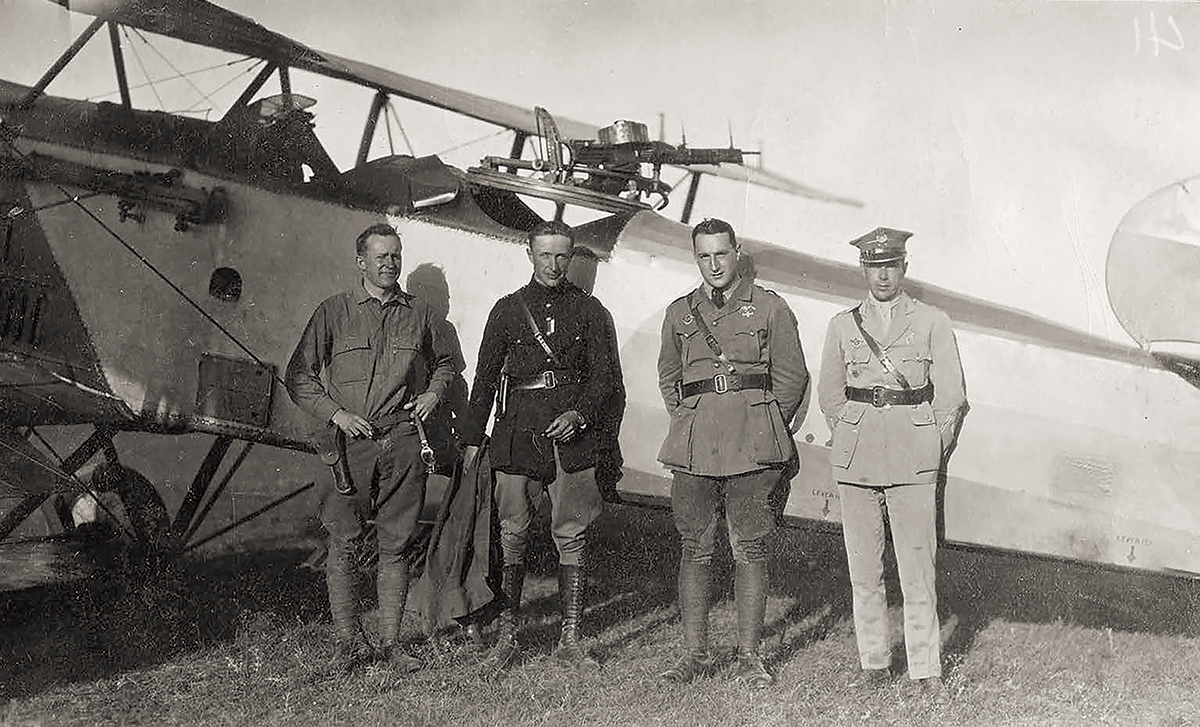King Kong has thrilled movie audiences ever since its premiere in 1933, but few people know that the man behind the movie had a life as adventurous as anything he put on screen. Merian C. Cooper learned what it was like to fly military aircraft like the ones that shot Kong off the Empire State Building—and how it felt to be on the receiving end of their bullets. He had piloted bombers in World War I and fighters for the Poles in the Polish-Soviet War and was shot down in both conflicts.
“Life has its high points,” Cooper once wrote. “You risk your skin, and in the moment when life balances with death, no matter how afraid you may be, you get a touch of the animal value of existence.”
More than once he experienced that delicate balance.
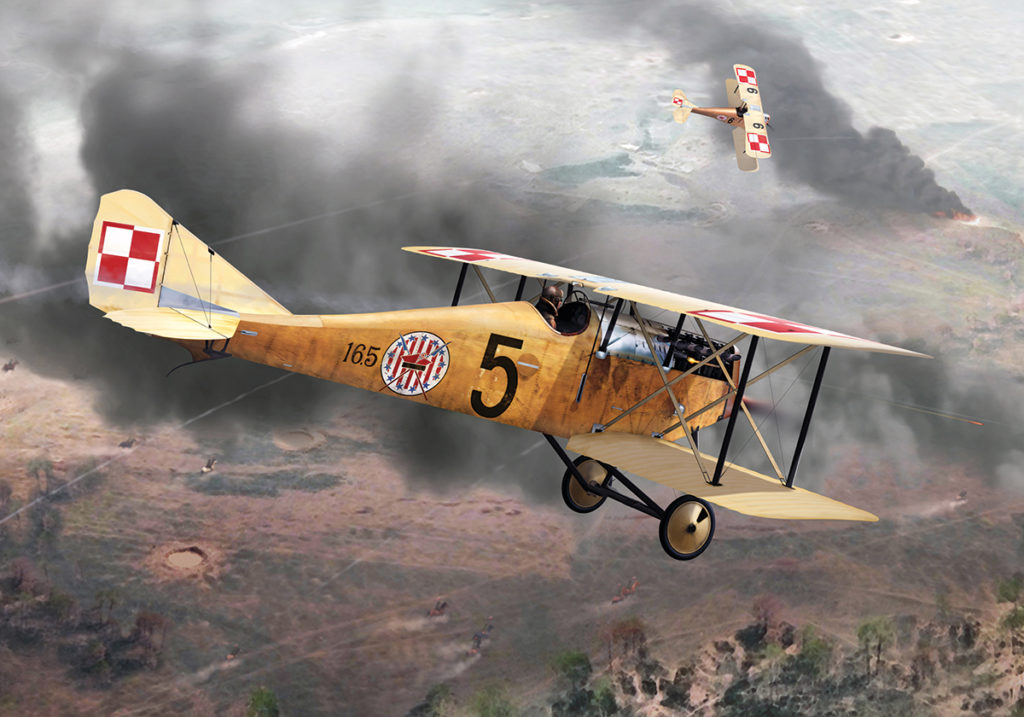
Cooper’s Early Life
Merian Coldwell Cooper was born on October 24, 1893, in Jacksonville, Florida. He attended the U.S. Naval Academy but got kicked out before he could graduate.
“I was high-spirited, loved excitement, took chances and got caught too many times,” he told film historian Rudy Behlmer in 1965. “Besides, I had been interested in aviation even since the Wright Brothers’ flight at Kitty Hawk and I wanted to get into World War I and fly and realized I couldn’t get into flying in the Navy.”
He joined the Georgia National Guard in 1916 so he could participate in the hunt for Francisco “Pancho” Villa in Mexico, and the Guard later sent him to aeronautics school in Georgia, where he learned to fly. Then Cooper headed off to France as a first lieutenant in the Army Air Service. Determined to enter combat as soon as possible, he trained to be a bomber pilot and received an assignment to the 20th Aero Squadron.
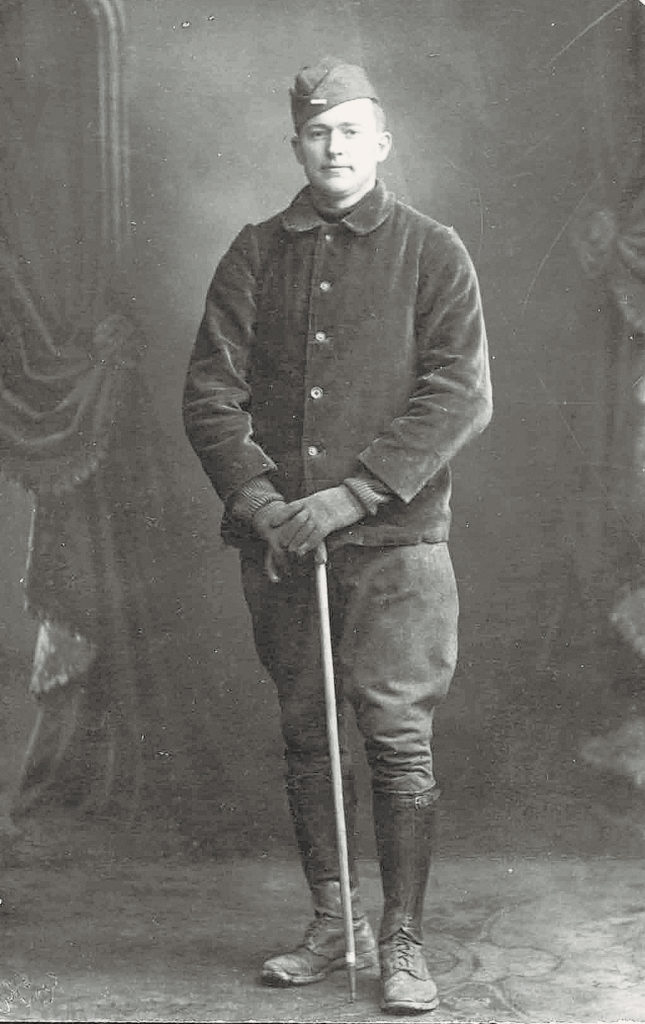
Fighting THe Germans
Cooper’s unit flew license-built British de Havilland DH-4 bombers powered by American Liberty engines. On September 26, 1918, Cooper was piloting one of seven DH-4s from the squadron, by then part of the 1st Day Bombardment Group, on a mission to bomb a railroad bridge across the Meuse River on the opening day of the Meuse-Argonne offensive. Lieutenant Sidney Howard—later a Pulitzer Prize-winning playwright and the screenwriter for Gone with the Wind—was leading the flight when it was assailed by German Fokker D.VII fighters of Jagdstaffel 12, which shot down five of the American planes.
One of them was Cooper’s. Living up to its pejorative nickname as the “flaming coffin,” the DH-4’s engine ignited and the flames spread into the cockpit. “As I fell straight down towards the earth in a spinning nosedive it looked to me as if the whole world was on fire,” Cooper wrote to his father. “The only thing in the world that I wanted to do was to get out of that pain.” Even though he didn’t have a parachute, Cooper readied himself to leap from the burning aircraft, but then he realized that gunner/bombardier, 1st Lt. Edmund C. Leonard was still alive.
Cooper returned to his controls. Badly burned, barely able to use his hands, Cooper made a crash landing. The Germans captured both men and Cooper spent the rest of the war in a German hospital. He had been wearing a flying mask and goggles, so his lips were the only part of his face that suffered, but his hands were badly burned. “The Germans did a beautiful job on them, but I’ve had trouble with them ever since,” he told Behlmer.
GET HISTORY’S GREATEST TALES—RIGHT IN YOUR INBOX
Subscribe to our HistoryNet Now! newsletter for the best of the past, delivered every Monday and Thursday.
The armistice ended the fighting on November 11, 1918, but Cooper did not go home until December. “I was one of the last people out of Germany because I wasn’t in any shape to be moved,” he said. The army had even issued his death certificate. For his actions Cooper received a recommendation for the Distinguished Service Cross but he turned it down. Serving with his squadron was honor enough, he said, adding, “I would feel in receiving any honor or decoration that I would be dishonoring my dead and living friends.”
After the war Cooper joined the American Relief Administration and began working to distribute food in Poland. When war with the nascent Soviet Union threatened, Cooper’s hatred of Bolshevism prompted him to seek a way to serve Poland militarily. The Versailles Treaty had created an independent Poland in 1918, but its eastern border could not be defined until the chaos from the Bolshevik revolution had subsided in Russia and a government emerged with which the Allied powers could negotiate. Not until December 1919 did the Allies’ Supreme War Council establish the Curzon Line as the border between Poland and Russia.
The Polish government refused to recognize this frontier, however, as its armies were already a considerable distance beyond it. The Poles had attacked first in February 1919, but it merely beat the Bolsheviks to the punch. Vladimir Lenin’s government, eager to expand its borders westward, had begun planning its attack on Poland that January and intended to launch its offensive in April.
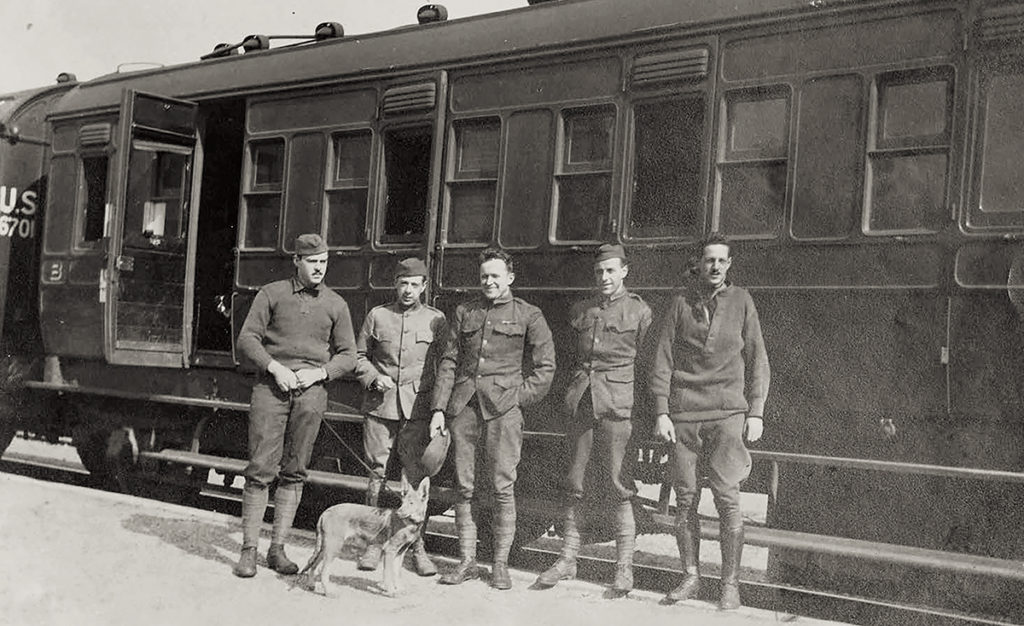
After meeting with Josef Pilsudski, the Polish head of state and commander in chief, in May 1919, Cooper headed to France and began recruiting other expatriate American airmen at the cafés of Paris to form a squadron and help the Poles. The first to sign up was Cedric E. Fauntleroy, who had entered the French air service with the Lafayette Flying Corps and subsequently transferred to the USAS to serve in Captain Edward Rickenbacker’s famed 94th “Hat in the Ring” Aero Squadron. Fauntleroy had already received an offer to be a technical advisor to Poland, but he decided to join Cooper instead.
Other volunteers included Edward C. Corsi of New York, another Lafayette Flying Corps volunteer who had shared in burning two German balloons while in Escadrille Spa.77, and Carl H. Clark of Tulsa, who had flown with the British. Kenneth O. Shrewsbury was a former law student; George M. “Buck” Crawford, who sported a carefully trimmed mustache, had been a squadron-mate of Cooper’s in the 20th. Edwin L. Noble was from Massachusetts and had a background in electrical engineering.
Arthur H. Kelly, a former aerial observer, recruited two of his friends back in London. None of these pilots were as fervent for the Polish cause as Cooper was, but they all sensed the opportunity for a great adventure. Because of his rank and experience, Major Fauntleroy was chosen as the squadron commander.
With eight men at hand and two more—Edmund Graves and Elliot William Chess—promised from London, the squadron set out for Poland in September 1919. Although officially designated the 7th Air Squadron (7. Rskadra Lotnica), the small force of Americans named themselves after Tadeusz Kosciuszko, a Pole who had fought in the American Revolutionary War under George Washington. In 1919, when the world was still reeling from World War I’s bloodshed, their motives seemed old-fashioned. As an editorial in the New York Times observed, they were “bringing into our time something of eighteenth century flavor, a reminiscence of the day when gentlemen lent their swords willingly to a worthy cause.”
The cause may have been worthy, but the flying conditions were primitive. “The military equipment available in Eastern Europe in 1919 was extremely limited,” wrote Norman Davies in his 1972 history of the conflict, White Eagle, Red Star: The Polish-Soviet War, 1919-20. “The Polish-Soviet War was fought on First World War surplus.” That meant Cooper and his fellow aviators had to fight first with Austro-Hungarian Oeffag-Albatros D.III and then Italian Ansaldo A.1 Balilla fighters.
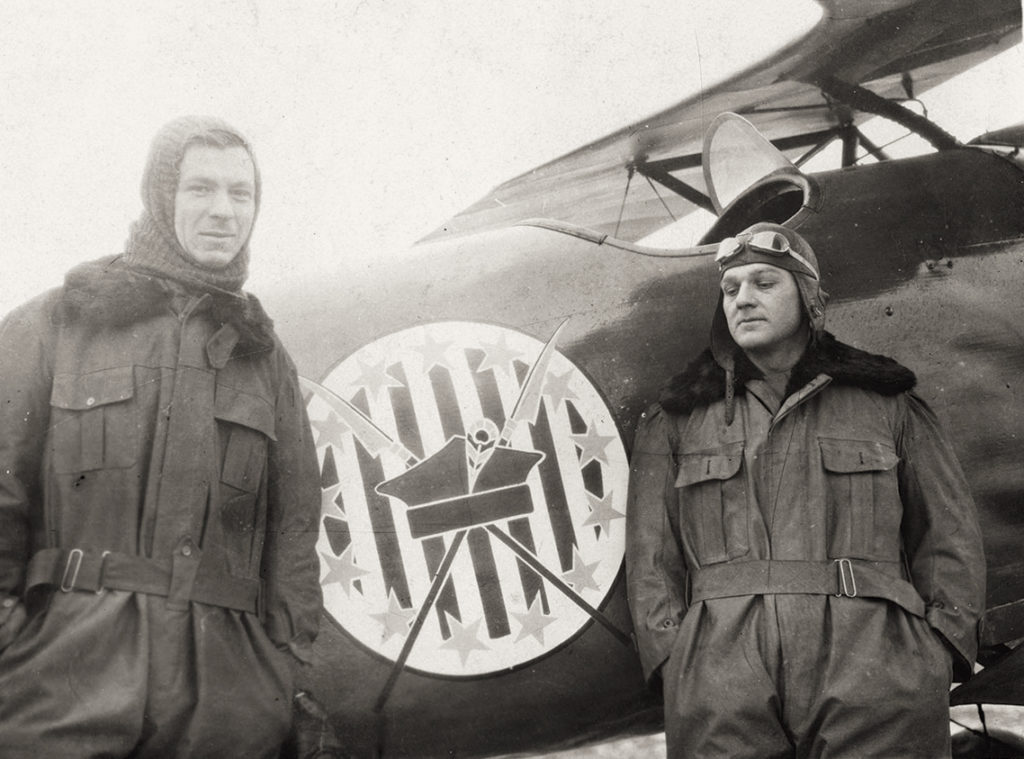
Tragedy struck before the squadron even tasted combat. On November 22, 1919, the squadron flew an exhibition in Lwow (Lviv) in honor of Pilsudski. After passing over the reviewing stand in an Albatros, Graves appeared to attempt a double roll over Potocki Palace. First the airplane’s left upper wing tore off, then the lower one. Graves managed to climb free of the cockpit and jump but smashed into the ground and died before his parachute could fully deploy. He was the squadron’s first casualty.
Once in the field, the Americans flew reconnaissance missions, delivered messages to units at the front and attacked men, horses, troop vessels, bridges and trains from the sky. The squadron never got a chance to experience air-to-air combat; the one time the men spotted a Bolshevik airplane it had disappeared by the time they could get off the ground in pursuit.
Their flying experiences match what historian Davies wrote about Polish aviation during the Soviet war in general: “They sometimes landed behind the lines to ask the villagers about the enemy, and frequently crash landed through disorientation or shortage of petrol. There are stories of grounded pilots being butchered by Cossacks, being rescued on snowsleighs driven by sympathetic priests, or even being worshipped by awe-struck peasants.”
On one occasion Crawford received a bullet through his main tank. He switched to his reserve, but the engine began to sputter and fail. Crawford made a forced landing in a field just ahead of some advancing Cossacks. The pilot leapt from the cockpit and ran—until he heard the airplane’s engine cough back to life. Apparently, the hard landing had knocked an obstruction from the fuel line. Crawford dashed back to his airplane, crawled into the cockpit and frantically tried to take off, plowing through a wheat field and over an irrigation ditch that nearly took off his landing gear. He finally pulled the nose up, but not quite fast enough to avoid a fence. The landing gear crashed through the obstruction, embedding a rail in the undercarriage. Crawford had to make a crash landing at the squadron’s base, but he emerged unscathed.
On another occasion, Chess and Fauntleroy were delivering a pair of brand-new Balilla biplanes when Chess landed his airplane on top of Fauntleroy’s, destroying both craft. Fauntleroy was “speechless with rage,” but the dapper Crawford attempted to look on the bright side. “Well, Faunt, we’ll have plenty of spare parts now, won’t we!” he said.
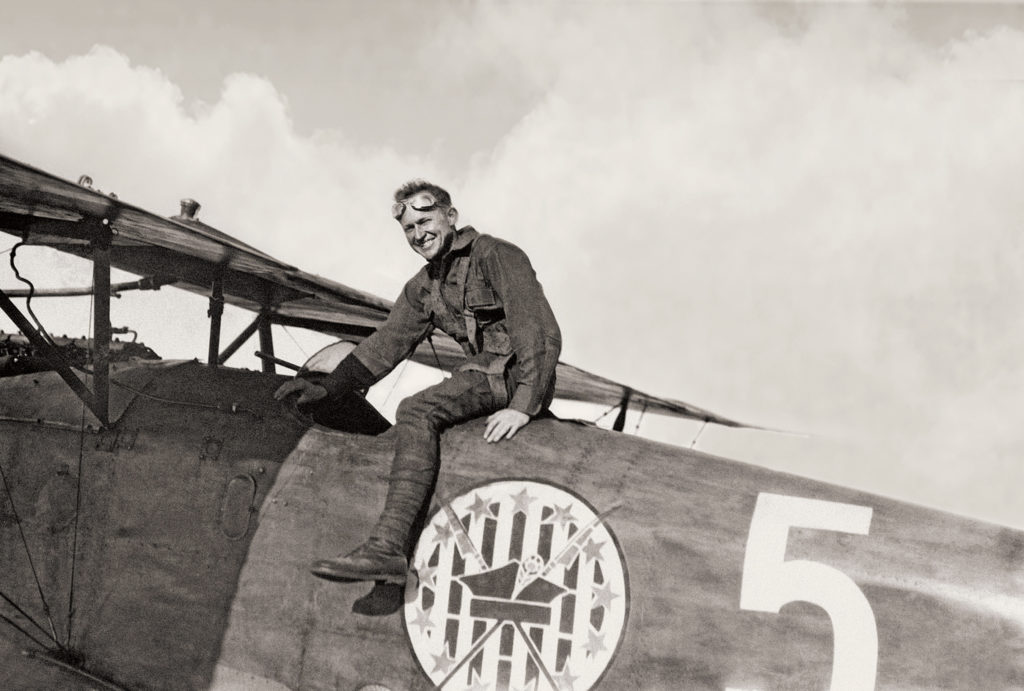
Starting in the spring of 1920, the Kosciuszko Squadron didn’t fly over a static front, but over an ever-changing one, first as the Polish armies moved headlong into Ukraine and took Kiev, then in reverse as the Bolshevik armies pushed the Poles back to the outskirts of Warsaw. (As one Polish soldier said, “We ran all the way to Kiev, and we ran all the way back.”)
To keep up with the fluid situation, Fauntleroy had a train outfitted to make the squadron a mobile air arm that they could fly from any level space the train could reach. They converted the train cars to meet their needs for barracks and repair shops. Even under such difficult conditions, the tiny force made a difference. As a Polish general noted with admiration, “The American pilots, though exhausted, fight tenaciously.
During the last offensive, their commander attacked enemy formations from the rear, raining machine-gun bullets down on their heads. Without the American pilots’ help, we would long ago have been done for.” The aerial support didn’t come without costs—on April 26 Edwin Noble was taken out of the conflict after he received a bullet in the elbow while attacking a train.
The American pilots tried to “shock and awe” the fierce Cossack horsemen of General Semyon Budyonny’s 1st Cavalry Army with attacks from the air. For a time, they succeeded.
Harmon Chadbourn Rorison, a cocky North Carolinian who was credited with three German fighters while serving in the 22nd Aero Squadron, USAS, and had arrived to replace Graves, noted one attack against cavalry when the airplanes attacked “until, actually weary of the sport, they drove off and headed for home, leaving but a sweating, cursing remnant of the Bolos to crawl into a nearby wood and rest from their strenuous ride.” The Cossacks soon learned to take defensive measures, sometimes merely dropping to the ground and covering themselves with their cloaks as camouflage. They also concealed guns in forests to shoot at the airplanes when they came down low.
Airplanes against men on horseback may seem like an unfair match, but a bullet from the ground could even the odds very quickly. Captain Cooper discovered that on July 13, 1920, when a Cossack bullet went through the engine of his Balilla and he had to make a forced landing near the enemy cavalry. Angry horsemen quickly surrounded him and stripped him of his flying suit. Cooper knew his life would be in danger if the Russians discovered his identity, because Budyonny had put a price on his head. Luckily, his burn-hardened hands marked him as a member of the proletariat, not a bourgeoisie officer, and his World War I-surplus underwear was stenciled with the name of its previous owner—so Captain Merian C. Cooper became Corporal Frank R. Mosher.
Issak Babel—later a noted Soviet author (and a victim of Stalin’s purges)—served as a supply officer with the Cossack cavalry in 1920 and kept a stream-of-consciousness journal of his experiences. In one entry he noted his encounter with the pilot he knew as Mosher. “A shot-down American pilot, oh how that smelled of Europe, like a coffee-house, civilization, power, old culture, I ponder and observe, I see it all, barefoot, but elegant, his neck like a pillar, dazzling white teeth, suit covered with oil and dirt. Asks me fearfully whether it is a crime to fight against Soviet Russia….”
Learn more about
Instead of being shot, Cooper was taken to Moscow and thrown into prison. He became sick with typhus and spent a cold and hellish winter. While imprisoned, he also had a chance encounter with a fascinating woman he had first met at a Red Cross dance in Warsaw. Marguerite Harrison was a Baltimore socialite (her sister married Maryland’s governor) who took up journalism and then, when her paper refused to send her to Europe to cover World War I, volunteered her services to the United States as a spy.
Like Cooper, she headed to Poland after the war, and then made her own way into Soviet Russia. When visiting prisons in Moscow, she received a smuggled note written by a prisoner who called himself Corporal Frank R. Mosher. “He wrote that he was in very bad physical condition and asked for food and clothing from the French Red Cross,” Harrison recalled. She provided what she could and received another note. “My name is not Mosher,” it read. “I am Merian C. Cooper of Jacksonville, Florida, and I know you well. Don’t you remember the time we danced together at a ball at the Hotel Bristol in Warsaw?” For a month Harrison smuggled supplies to Cooper until she was herself arrested.
Fearing that he could be exposed at any time, Cooper decided to make his break from the prison camp to which he had transferred. On the night of April 12, 1921, Cooper and two Polish officers, Lieutenants Stanislaw Zalewski and Stanislaw Sokolowski, escaped and set off walking and running through the hours of frigid darkness. They had some 500 miles of territory to traverse before they would reach the Latvian border and safety, and they would have to pass through a country where everyone they met would certainly eye them with suspicion.
They slept the next day near a railway station. That night they followed the example of American hobos and hopped a freight train. They remained with the train until approaching dawn made it too dangerous. Once the stations became so few and far between that they risked being caught in the daylight hours aboard the trains, they began following the rails on foot, making their way through forests and swamps.
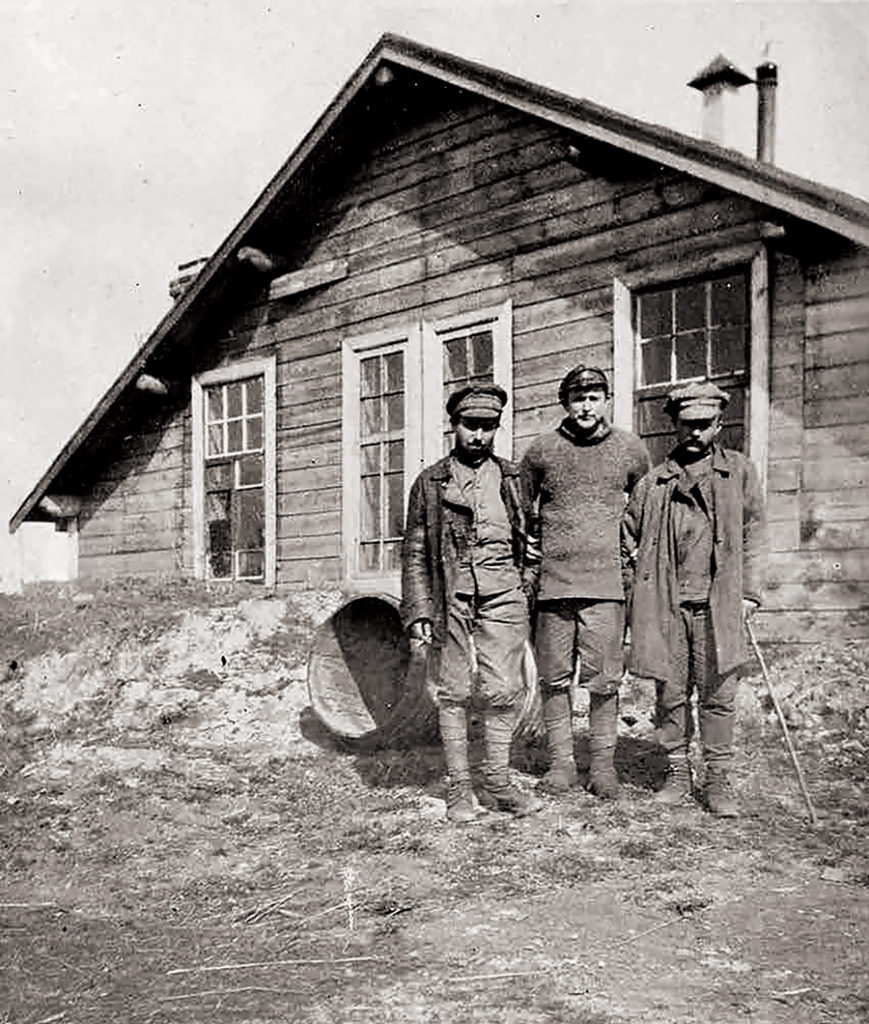
They finally neared the Latvian border, the most perilous juncture of the entire journey. The three men found a professional smuggler who agreed to take them over the border in exchange for an overcoat and a pair of shoes. Sokolowski sacrificed his coat. Cooper gave up his shoes and tore off the tails of his shirt to cover his feet. At the last minute the smuggler threatened to turn the men over to the Bolsheviks. “Since we had absolutely nothing more with which we could part,” Cooper related, “and seeing the critical situation in which we found ourselves, Lieutenant Zalewski, who speaks perfect Russian, told the smuggler that he would kill him if he did not guide us safely to the Latvian border.”
Perhaps Zalewski was bluffing, but the threat from three obviously desperate men persuaded the smuggler to keep his bargain. On April 23 the three escaped prisoners passed over the Latvian border to safety. Cooper managed to make it back to Warsaw in time for a ceremony in which members of the squadron received medals for their service to Poland. Cooper and Fauntleroy both received the Polish equivalent of the U.S. Medal of Honor, the Virtuti Militari (see below).
By then the fighting had ended with an armistice that went into effect at midnight on October 18, 1920; the Treaty of Riga officially ended the war the next March. Polish casualties were about a quarter million, with 48,000 dead, but the Poles had stopped the enemy advance outside Warsaw and pushed the routed Bolsheviks back through Ukraine. “In objective terms, it is hard to recognize any victory,” said one historian about the conflict. “None of the contestants’ war aims had been achieved…. The result of the Polish-Soviet War was not compromise, but stalemate. There was no solution.” The Kosciuszko Squadron had performed admirably, however. Its pilots had flown more than 400 missions under extremely difficult conditions.
Cooper’s days in Poland had repercussions on his life. For one thing, a liaison with a Polish woman had resulted in an illegitimate son. For another, in 1922 he reunited with Marguerite Harrison in New York City, where the two adventurers and ex-prisoners bemoaned the lack of excitement in the post-war world. They joined forces with a lanky Midwesterner named Ernest B. Schoedsack, who had photographed the war in Poland, and embarked on an expedition to film a documentary about Persian nomads in what is now Iran. They called the resulting movie Grass. Its success started Cooper and Schoedsack on the road that led to their co-direction of Cooper’s greatest creation, King Kong.
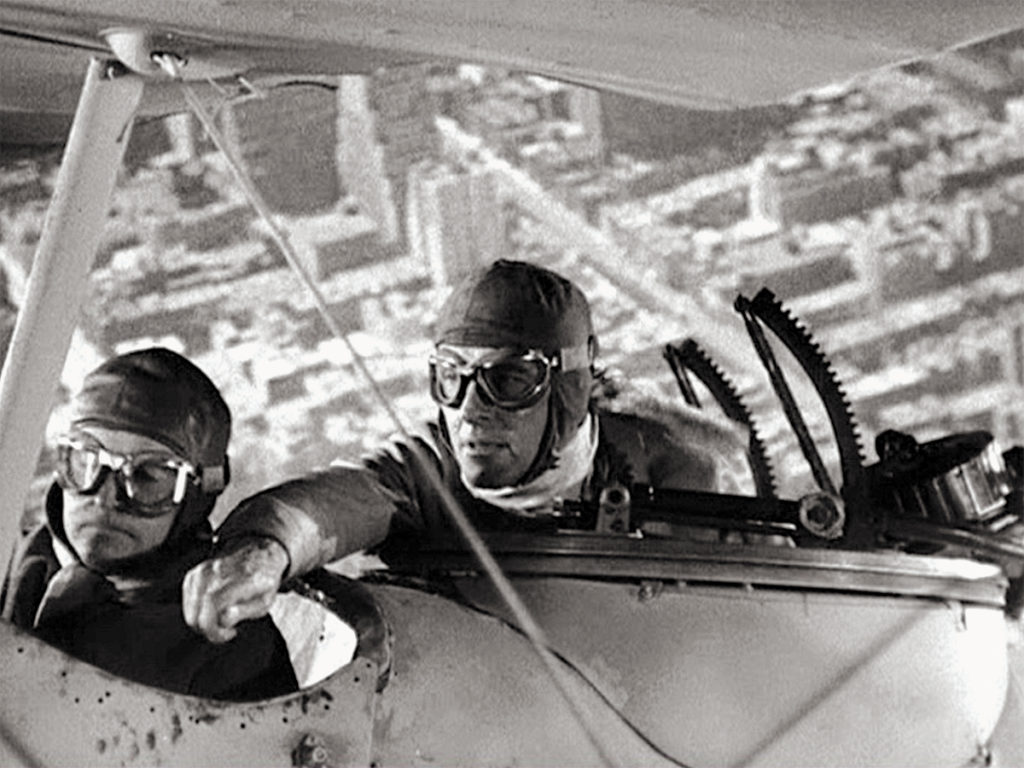
When Cooper and Schoedsack filmed the sequence in which Curtiss F8C Helldivers shoot Kong off the Empire State Building, they decided they would appear onscreen as the lead airplane’s pilot and gunner. “Let’s kill the son of a bitch ourselves,” Cooper said. Some might call that typecasting.
Tom Huntington is the editor of Aviation History. For further reading he recommends Kosciuszko, We Are Here! American Pilots of the Kosciuszko Squadron in Defense of Poland, 1919-1921 by Janusz Cisek and Living Dangerously: The Adventures of Merian C. Cooper, Creator of King Kong by Mark Cotta Vaz.
AERO ARTIFACT: FLYING COLORS
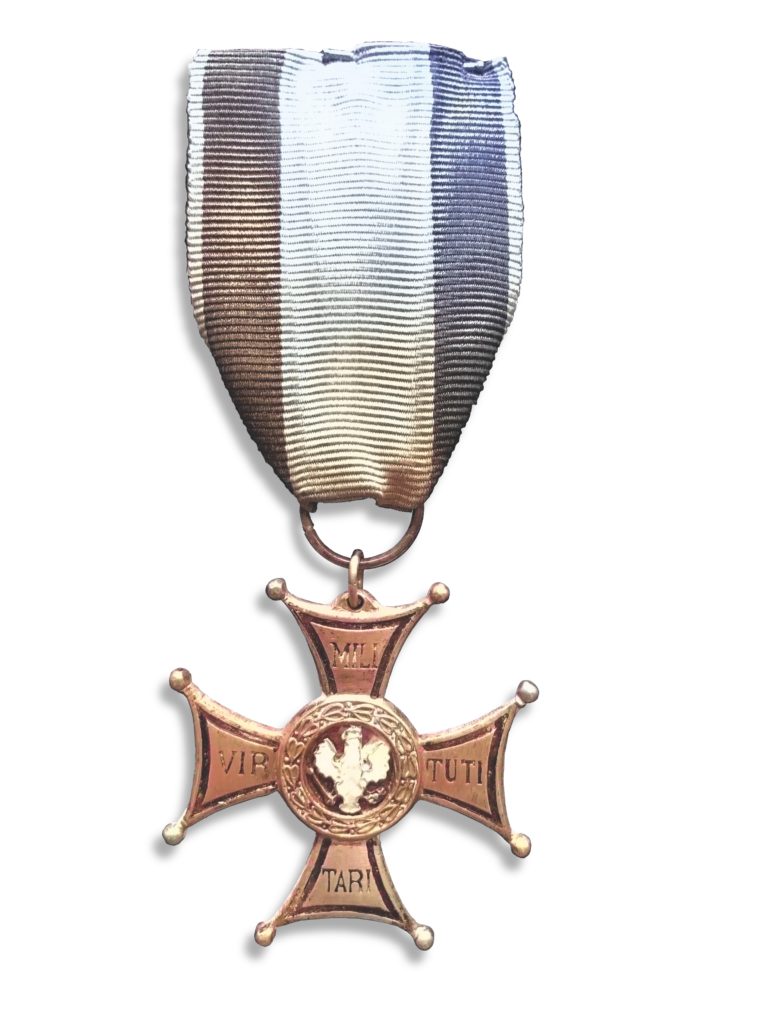
Even before producing and directing the classic 1933 film King Kong, Merian C. Cooper lived a life of drama and adventure, his greatest exploit no doubt being his role in founding the American Kosciuszko Squadron that fought for Poland in the Polish–Soviet War of 1919-20. For his daring service providing aerial support for Polish troops against the enemy to the east—action that led to a shot-out engine and capture by the Russians—the Polish government in 1921 awarded Cooper the Virtuti Militari silver cross “for acts of outstanding bravery and risk of life on the field of battle.” One of Poland’s highest military decorations, the Virtuti Militari is also one of the world’s oldest. First established in 1792, a very early recipient was, fittingly enough, 18th-century Polish and American military hero Tadeusz Kosciuszko—for whom Cooper named his squadron. — Larry Porges
historynet magazines
Our 9 best-selling history titles feature in-depth storytelling and iconic imagery to engage and inform on the people, the wars, and the events that shaped America and the world.


